If you routinely draw your fashion inspiration from films (as I do), you’ll notice that one classic item of clothing keeps appearing over and over: the sailor-striped shirt. Known alternately as the marinière, the Breton shirt, and the telnyashka in Russia, the simple white and navy blue pullover is an iconic fashion piece with international appeal. Originally created for the French navy—the stripes helped spot seamen who had gone overboard—the style was co-opted by Coco Chanel, and the rest is fashion history. Perhaps it’s no surprise that the shirt has been equally prominent onscreen: its graphic horizontal stripes read well on film, and both the masculin and the féminine look good in it. Below are some of my favorite striped-shirt in cinema moments:

Zouzou [Allégret, 1934]. Jean Gabin sports the classic French naval uniform while Josephine Baker dons the pom-pom hat.
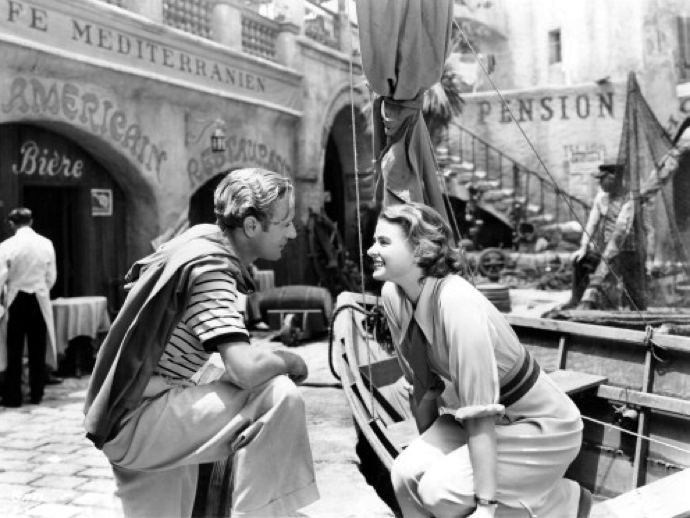
Intermezzo [Ratoff / Selznick, with cinematography by Gregg Toland, 1939]. Leslie Howard is a virtuoso violinist in a sailor shirt? Of course Ingrid Bergman would swoon.
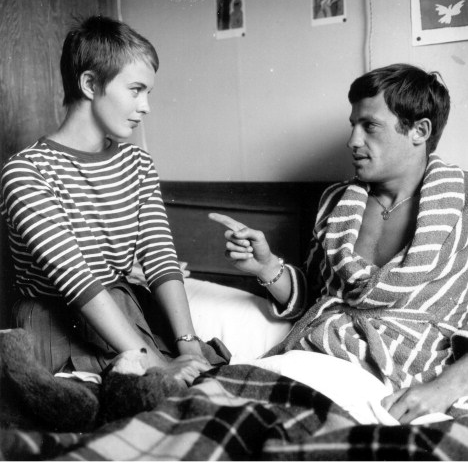
Breathless [Godard, 1960]. A bit of graphic wit from Godard: Jean Seberg and Jean-Paul Belmondo’s stripes go up, down, and across.
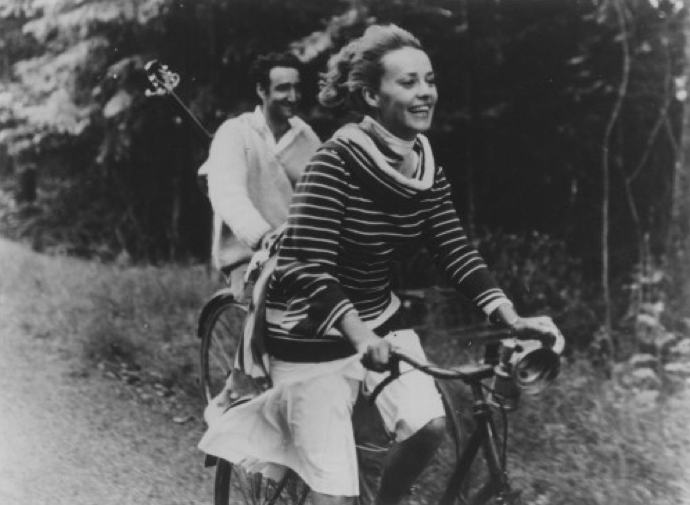
Jules and Jim [Truffaut, 1962] Jeanne Moreau looks blissful in this perfect-for-cycling sweater.
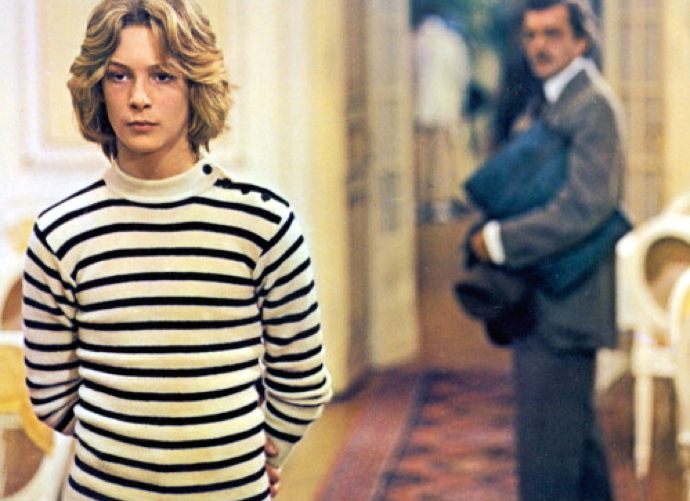
Death in Venice [Visconti, 1971] Björn Andrésen as the beautiful Tadzio wears the shoulder-buttoned version.
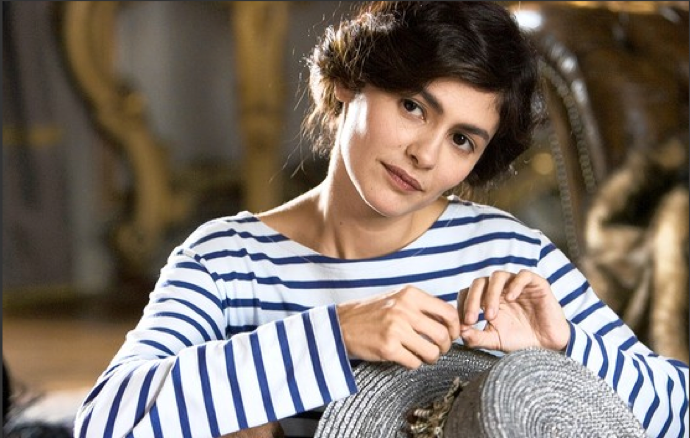
Coco Before Chanel [Fontaine, 2009] This one’s easy, but I do like the way the film immortalizes Coco’s borrowed-from-the-boys style.
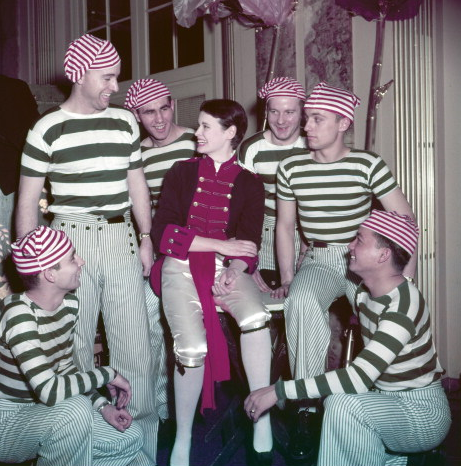
This photo is not from a film, but is so awesome that I had to include it. Who wouldn’t want to be Gloria Vanderbilt surrounded by um, stripes in this photo? [From the 1954 “April in Paris†ball at the Waldorf-Astoria]
Of course, seeing all of this striated loveliness begs the question: where can one obtain the perfect sailor shirt, and the waves of cool that come with it? My secret source, which is not-so-secret anymore since this piece in the New York Times, is Kaufman’s Army Navy. Shopping at this chaotic, one-of-a-kind New York institution is an experience altogether unequalled.

Wearing my Russian naval shirt from Kaufman’s—perhaps the easiest piece of clothing I own.
If you don’t live in New York, I’m sad for you, but you can order the high-end French original from St. James, or the easier-on-the-wallet Russian version from I Sea Stripes. Both are authentic (because really, do you need another striped shirt from the Gap?) and evoke the effortless charm that only stripes can.







